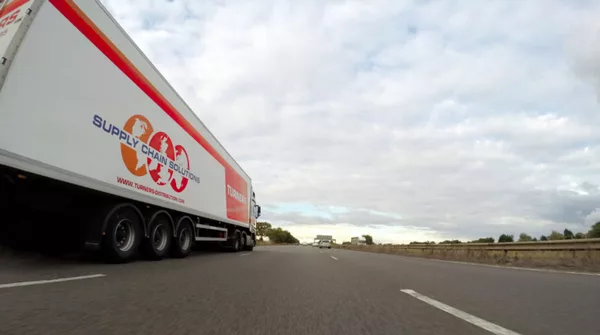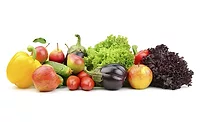Food Supply Chains are Ripe for Innovative Solutions to Reduce Waste and Carbon Footprint

Discussions around environmental sustainability and efforts to reduce greenhouse gas emissions mostly revolve around optimizing emissions by introducing clean energy solutions, more efficient transportation and industry practices, as well as sustainable agriculture. A topic that is often overlooked is the environmental impact of the food that is wasted globally.
Food supply chains are ripe for innovative solutions. Around a third of globally produced food is wasted—either spoiled in transit or thrown out by consumers in wealthier economies. Food waste makes up at least 1.3 billion tons of food lost annually, which is worth nearly $1 trillion in retail prices, according to National Geographic.[1] It is important to highlight, however, that besides economic, ethical, and social impacts, food waste has a significant effect on the environment.
Without accounting for the greenhouse gas emissions from land use change, the carbon footprint of food produced and not eaten is estimated to be 3.3 Gtonnes of carbon dioxide. This makes up approximately 7 percent of all global emissions as published by the United Nations’ Food and Agriculture Organization (FAO). To put this into perspective, if food waste was a country, the greenhouse emissions generated by it would be the third largest among all countries globally, just after the emissions generated by China and the U.S.
Producing the food we waste is resource intensive. It requires land, water, labor, and other resources. Food loss and waste occur in various stages of the food supply chain. About one-third of all food waste is directly caused by consumers who buy too many products that they are unable to eat. The rest of the food waste is the result of production and distribution activities. A large amount of food rots on fields or gets spoiled during transportation due to poor transportation networks, the lack of preservation techniques, or improper temperature conditions. Production, processing, and agriculture are producing the most emissions, but other steps like distribution and transportation of food also cause greenhouse gas emissions. Therefore, wasting food not only means that resources are wasted but also that greenhouse gas emissions have been caused in vain.
Emissions from agriculture in 2050 could be avoided by managing food use and distribution better, according to a new study from the Potsdam Institute for Climate Impact Research.[2] For this to occur, all stakeholders in the food supply chain need to evaluate their processes to discover opportunities that can lead to food waste reduction. This claim is also supported by FAO director-general José Graziano da Silva, who says that "All of us—farmers and fishers, food processors and supermarkets, local and national governments, individual consumers—must make changes at every link of the human food supply chain to prevent food wastage from happening in the first place, and reuse or recycle it when we can't.”
Reducing the Carbon Footprint of Food Waste by Improving Cold Chain Management During Transportation
The length of time until food products remain edible depends on various factors such as temperature and moisture, as well as other factors that influence the growth rate of organisms that lead to spoilage. Shipping food and beverage items—whether across the country or across the world—requires careful preparation, packaging, and handling to make sure that perishable goods remain in good condition during transit. Transporting goods under proper condition helps companies prevent the production of millions of tons of avoidable perishable waste along the food supply chain.
To demonstrate, a business case calculated by Arviem AG shows that one shipping container fully loaded with 13.4 tons of milk cream products carries goods which generated until the point of loading the total carbon footprint of 101,840 kg of carbon dioxide. If something happens to this container during transport—it gets dropped from a crane causing shocks or the temperature or humidity values within the container rise above the tolerated level and damage the product’s packaging or cause spoilage—an immense amount of carbon dioxide has been generated for no useful purpose. Besides the negative impact on the shipper's sustainability key performance indicators, the shipper is also facing financial loss due to the wasted resources.
Looking for quick answers on food safety topics?
Try Ask FSM, our new smart AI search tool.
Ask FSM →
There are affordable and effective technologies on the market today that help companies to address the aforementioned issues. These technologies enable shippers to track and monitor the conditions of perishable products in transit to ensure proper conditions are being maintained during the products’ journey. IoT enabled wireless sensor and communication systems are serving as remote quality supervision. They have the capabilities to accumulate environmental condition data, transmit this in real-time to monitoring dashboards, and generate automated warning messages for cargo containers with insufficient cooling and nonoptimal atmospheric conditions. Thanks to this, the owners or recipients of the cargo can take corrective actions. This ensures savings, business continuity, and customer satisfaction all while helping to prevent spoilage on the distribution level.
Arviem AG addresses the needs of the shippers of perishable products and solves the challenges of obtaining visible and intelligent trade by offering real-time, end-to-end cargo tracking and monitoring services. As the only full-service provider for real-time cargo tracking and monitoring on the market, Arviem provides exceptionally accurate location and quality condition monitoring of cargo throughout the global supply chain.
To learn more about the benefits of monitoring perishable cargo and the advantages of food supply chain traceability and supply chain visibility, download Arviem’s white paper at Arviem.com.

Stefan Reidy is a leader, a supply chain enthusiast, and a visionary aiming to build the supply chain service ecosystem of the future. He is the founder and the CEO of the Swiss Arviem AG, helping manufacturers, exporters and importers to reveal inefficiencies in their supply chains by enabling transparent global trade via supply chain visibility solutions and real-time cargo monitoring services. Stefan has over 20 years of experience with innovative technologies and business models in the supply chain which he gathered both by working for corporations and in the start-up environment.
References:
1. https://news.nationalgeographic.com/news/2015/01/150122-food-waste-climate-change-hunger/.
2. Potsdam Institute for Climate Impact Research (2016). https://pubs.acs.org/doi/10.1021/acs.est.5b05088.
Resources:
FAO (2013). Food wastage footprint: Impacts on natural resources. Retrieved from http://www.fao.org/docrep/018/i3347e/i3347e.pdf.
Harvey, C. (2016). The enormous carbon footprint of food that we never even eat. https://www.washingtonpost.com/news/energy-environment/wp/2016/03/28/the-enormous-carbon-footprint-of-the-food-we-never-eat/?noredirect=on&utm_term=.109be9ad5357.
Liljestrand, K. (2016). Reducing the environmental impact of food products logistics systems
http://publications.lib.chalmers.se/records/fulltext/245227/245227.pdf.
Murdock, A. (2017) What you need to know about food waste and climate change. https://www.universityofcalifornia.edu/longform/what-you-need-know-about-food-waste-and-climate-change.
Scholz, K. (2013). Carbon footprint of retail food wastage: A case study of six Swedish retail stores. https://stud.epsilon.slu.se/5870/1/scholz_k_130708.pdf.
Smith, R. (2015). How Reducing Food Waste Could Ease Climate Change








